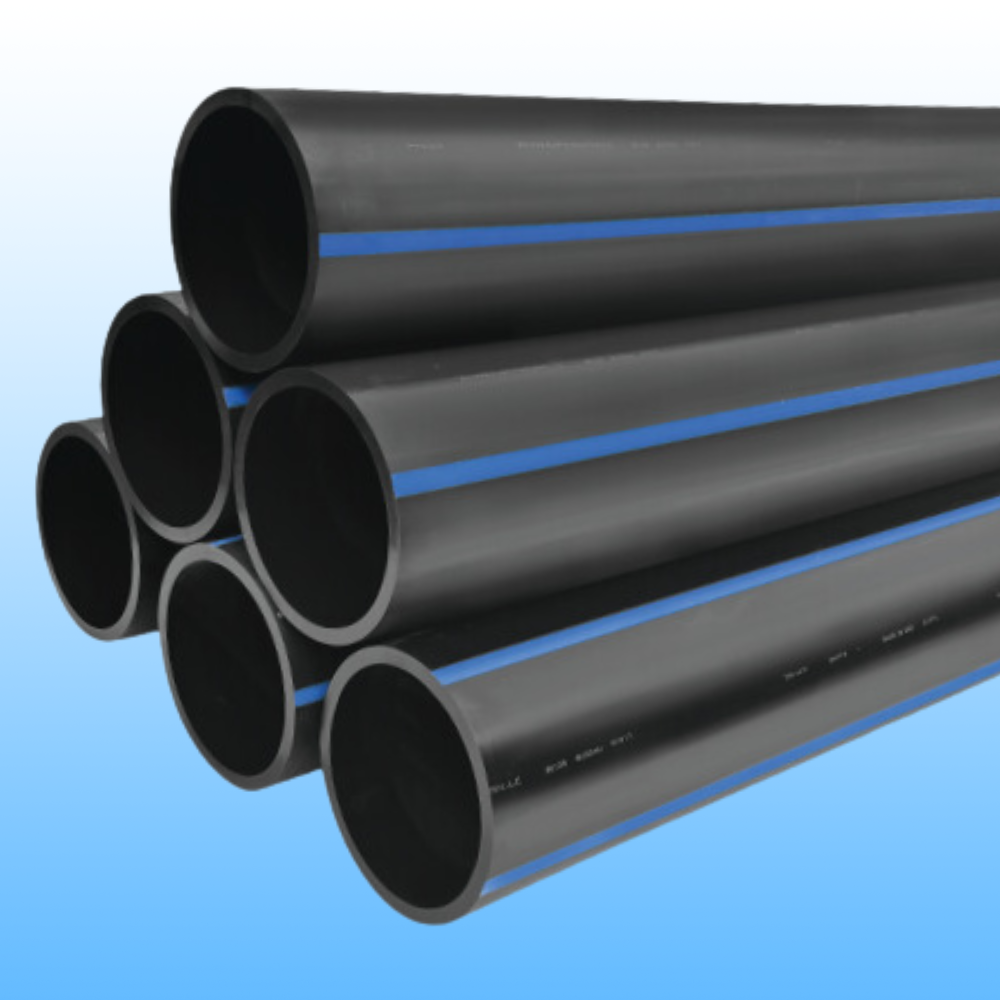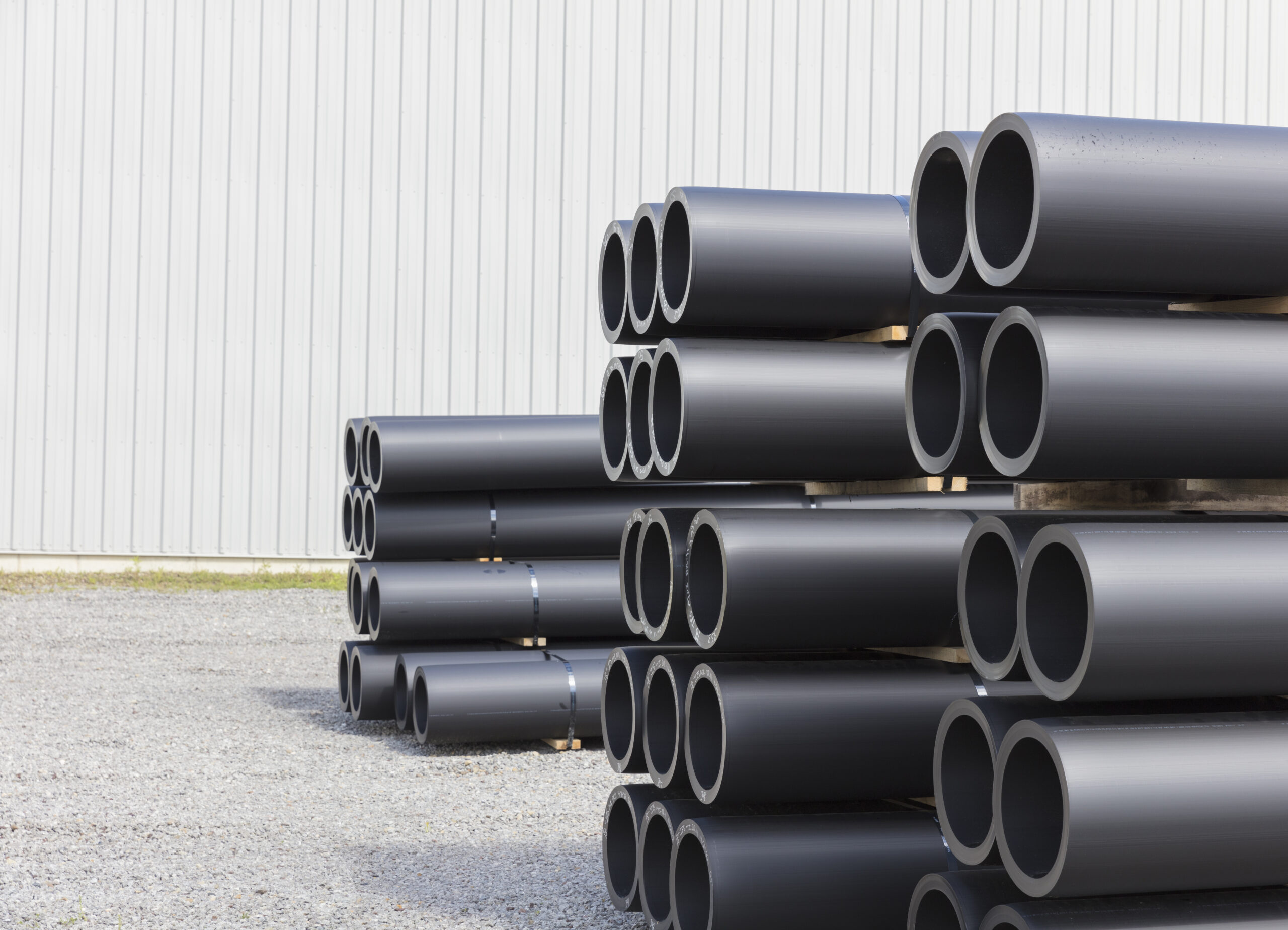How hdpe pipe suppliers Midland TX Are Enhancing Agriculture
Discover the Manufacturing Refine Behind High-Quality HDPE Pipeline and Its Applications
The manufacturing process of top notch HDPE pipelines is intricate and methodical. It starts with the choice of resources that improve efficiency. Following this, ethylene goes through polymerization to create material, which is then formed with extrusion. Quality assurance is critical, guaranteeing that the end product meets rigorous requirements. Nonetheless, the journey of HDPE pipes doesn't finish with production. Their applications across numerous industries reveal a broader value worth analyzing.
Understanding HDPE: Features and Advantages

High-density polyethylene (HDPE) is a flexible polycarbonate known for its sturdiness and resistance to different ecological aspects. This product exhibits outstanding tensile toughness, making it ideal for requiring applications. Its low-density framework adds to a lightweight item, helping with convenience of handling and installment. HDPE likewise showcases impressive resistance to chemicals, which lessens degradation when revealed to extreme materials.
The material's low wetness absorption even more boosts its durability, making it suitable for usage in pipelines and storage containers. In addition, HDPE is resistant to ultraviolet (UV) radiation, ensuring that products preserve their stability also when subjected to sunlight. Moreover, its adaptability enables the production of detailed shapes without endangering stamina. The eco-friendly nature of HDPE, commonly stemmed from recycled materials, contributes to its charm, advertising lasting techniques in production. In general, these residential properties and advantages make HDPE a preferred selection for various industrial and customer applications.
Raw Material Selection for HDPE Manufacturing
The option of resources for HDPE manufacturing is necessary to verify the end product satisfies the preferred specs and quality standards. High-density polyethylene (HDPE) is primarily created from polymerized ethylene, originated from nonrenewable fuel sources such as gas or petroleum. The quality of these feedstocks significantly influences the mechanical and thermal buildings of the final HDPE.
Additives likewise play a considerable duty in boosting HDPE's performance, consisting of antioxidants, UV stabilizers, and colorants, which improve longevity and resistance to ecological factors. The choice procedure need to think about not just the chemical composition of the raw materials yet additionally their handling attributes to guarantee effective production.
The sourcing of raw materials must focus on sustainability and compliance with ecological regulations, as responsible practices are critical in today's market. Ultimately, cautious basic material choice lays the structure for producing premium HDPE pipes appropriate for varied applications.
The Extrusion Process: Forming HDPE Pipe
The extrusion process plays a crucial duty in forming HDPE pipes, beginning with precise product prep work strategies that assure excellent circulation and uniformity. Just as essential is the style of the die, which straight affects the last dimensions and surface area high quality of the pipe. Together, these elements contribute greatly to the performance and high quality of HDPE pipe manufacturing.
Product Preparation Methods
Reliable production of HDPE pipes begins with precise product preparation methods, particularly the extrusion process. During this phase, high-density polyethylene material is first dried to eliminate wetness, making certain excellent flow attributes. The resin is after that fed right into the extruder, where it undertakes heating and melting, transforming right into a thick state. This home heating procedure is carefully regulated to preserve the product's honesty and performance. The molten HDPE is compelled with a die, shaping it right into a continuous pipeline form. Correct temperature monitoring throughout extrusion is vital, as it directly influences the material's residential properties and the end product top quality. When shaped, the HDPE pipeline is cooled down and cut to specified sizes, prepared for subsequent processing and applications.
Die Style Importance
Precision in die design plays a necessary duty in the extrusion procedure of HDPE pipes. The die functions as the final shaping device, directly influencing the pipe's dimensions, wall surface thickness, and surface finish. A properly designed die warranties consistent product flow, decreasing flaws such as irregularities and weak points. The geometry of the die must be enhanced to suit the details properties of HDPE, including its thickness and thermal actions throughout extrusion. In addition, the cooling rate of the product as it goes through the die can significantly influence the pipeline's structural integrity. Investing in advanced die technology is essential for producers intending to create high-quality HDPE pipelines that meet market standards and customer assumptions.
Quality Assurance Procedures in HDPE Manufacturing
Although various factors influence the top quality of HDPE pipeline manufacturing, reliable quality assurance measures are important to ensure consistency and integrity in the final item. Key quality assurance methods include rigorous product evaluation, validating that the raw polyethylene fulfills recognized criteria for pureness and thickness. Throughout the extrusion process, criteria such as temperature level, pressure, and cooling time are carefully checked to preserve dimensional accuracy and structural honesty
Furthermore, post-production testing is crucial; makers usually perform hydrostatic examinations to company website evaluate the pipeline's toughness and resistance to pressure. Visual inspections for surface defects further boost high quality guarantee. Qualification from pertinent standards companies, like ASTM or ISO, supplies an added layer of integrity. By carrying out these detailed quality assurance procedures, manufacturers can decrease issues, boost efficiency, and ensure that the HDPE pipelines meet the particular demands of various applications, inevitably resulting in client complete satisfaction and count on the item.
Applications of HDPE Pipeline Throughout Industries
HDPE pipelines are used throughout different markets because of their sturdiness and versatility. In water distribution systems, they ensure efficient shipment, while in wastewater management, they supply dependable options for waste transportation. Additionally, agricultural irrigation networks take advantage of HDPE's resistance to rust and adaptability, making it an optimal choice for contemporary farming methods.

Water Distribution Equipments
A significant number of markets rely upon high-density polyethylene (HDPE) pipelines for efficient water distribution systems. Understood for their sturdiness and resistance to deterioration, HDPE pipes are widely made use of in municipal water supply networks, agricultural watering, and commercial applications. Their light-weight nature facilitates very easy handling and setup, decreasing labor expenses and time. Furthermore, HDPE pipelines can suit various pressure degrees, making them appropriate for both low and high-pressure systems. Texas hdpe pipe manufacturer. The versatility of the product permits smooth assimilation right into existing facilities, decreasing the need for considerable excavation. HDPE's resistance to chemical leaching warranties that the water delivered remains risk-free and tidy, making it a perfect choice for preserving the quality of potable water throughout numerous industries.
Wastewater Administration Solutions
Reliable water distribution systems additionally lead the means for innovative wastewater administration remedies, where high-density polyethylene (HDPE) pipes play a considerable duty. Renowned for their sturdiness and resistance to corrosion, HDPE pipelines are excellent for transferring wastewater in various setups. Their adaptability enables for simple installment in complicated atmospheres, lessening the demand for substantial excavation. Furthermore, HDPE's smooth indoor surface area reduces friction, enhancing circulation rates and performance. These pipelines are also immune to chemical leaching, ensuring that pollutants do not compromise the surrounding atmosphere. Industries, towns, and therapy facilities significantly count on HDPE pipes for their reliability and durability, making them a recommended selection for contemporary wastewater management systems. This versatility highlights the vital relevance of HDPE pipes across many applications.
Agricultural Watering Networks
Agricultural watering networks benefit greatly from the use of high-density polyethylene (HDPE) pipelines, which offer efficient and reputable water delivery to crops. HDPE pipes are lightweight, making them simple to deliver and mount, while their versatility enables different setups in varied surfaces. These pipelines demonstrate outstanding resistance to deterioration, chemicals, and UV radiation, ensuring toughness in rough agricultural environments. Additionally, their smooth interior surface area lessens rubbing loss, optimizing water circulation and reducing power costs connected with pumping. The durability of HDPE pipelines, frequently going beyond half a century, adds to lower maintenance and replacement expenditures. Farmers significantly rely on HDPE pipes to enhance watering performance and advertise lasting agricultural practices, ultimately leading to boosted plant returns and source conservation.

Future Patterns in HDPE Pipeline Modern Technology
As the demand for sustainable and efficient framework expands, developments in HDPE pipeline modern technology are positioned to transform numerous industries. Emerging patterns include the integration of clever modern technologies, such as sensing units and IoT click this capabilities, which facilitate real-time surveillance of pipe problems, lowering maintenance prices and avoiding leakages. Furthermore, the development of innovative manufacturing strategies, such as 3D printing, is making it possible for the production of complex, personalized pipe layouts that deal with specific project requirements.
Moreover, the concentrate on recycling and circular economy practices is driving the development of HDPE pipes made from recycled products, enhancing sustainability. Boosted jointing techniques, such as electro-fusion and mechanical fittings, are additionally boosting installment efficiency and integrity. The growing emphasis on environmental guidelines is pressing makers to adopt greener production procedures, making sure that HDPE pipelines not just fulfill sector standards yet likewise promote an even more lasting future for framework advancement.
Regularly Asked Inquiries
Just How Does HDPE Contrast to Various Other Plastic Products?
HDPE outshines many various other plastic materials relating to sturdiness, chemical resistance, and flexibility. Its reduced density and high tensile stamina make it suitable for various applications, frequently going beyond alternatives in both performance and long life.
What Are the Ecological Impacts of HDPE Manufacturing?
The ecological impacts of HDPE production include greenhouse gas emissions, energy intake, and prospective contamination from making processes. In addition, inappropriate disposal can cause soil and water contamination, raising issues concerning long-lasting eco-friendly impacts.
Can HDPE Water Lines Be Recycled?
Yes, HDPE pipes can be reused. Many facilities approve utilized HDPE for processing, changing pvc p trap it right into brand-new products. This recycling adds to sustainability efforts, decreasing plastic waste while preserving resources and power in the manufacturing cycle.
What Is the Life Expectancy of HDPE Pipes?

How Do Temperature Level Variations Affect HDPE Pipeline Efficiency?
Temperature level variants considerably impact HDPE pipeline efficiency, influencing adaptability and stamina. High temperatures can bring about softening, while low temperature levels may create brittleness, eventually affecting the pipeline's longevity and suitability for different applications in varied atmospheres.